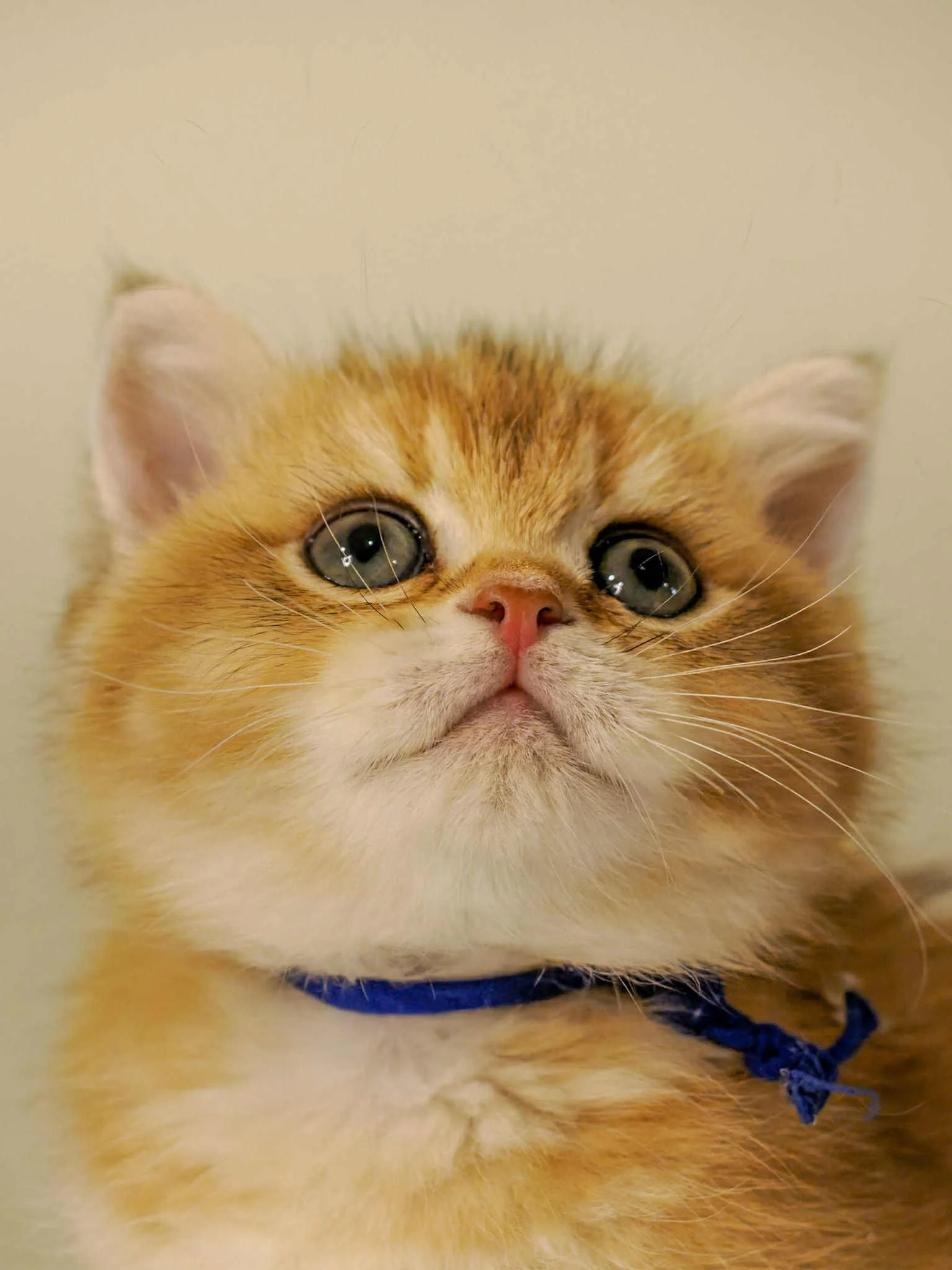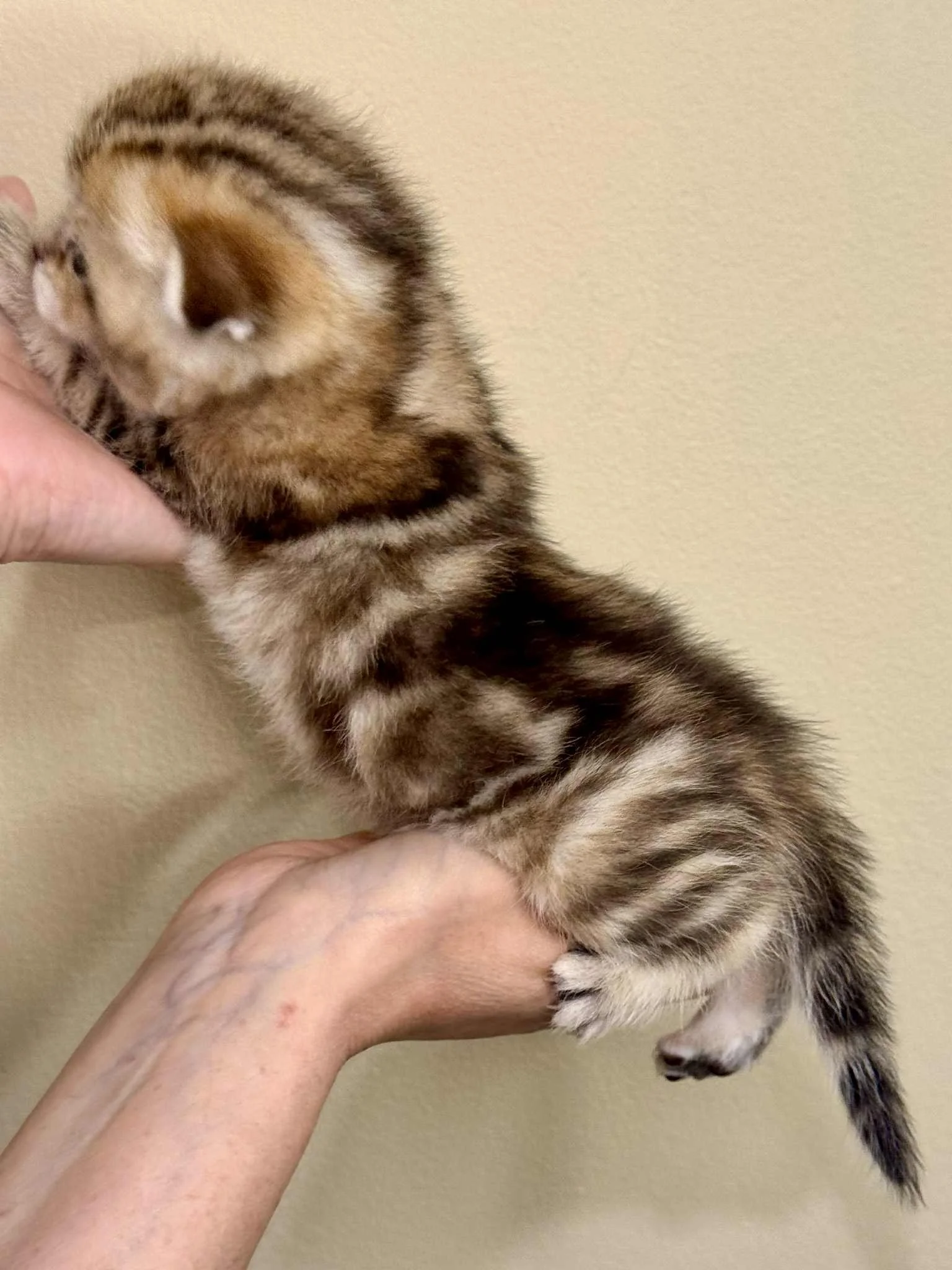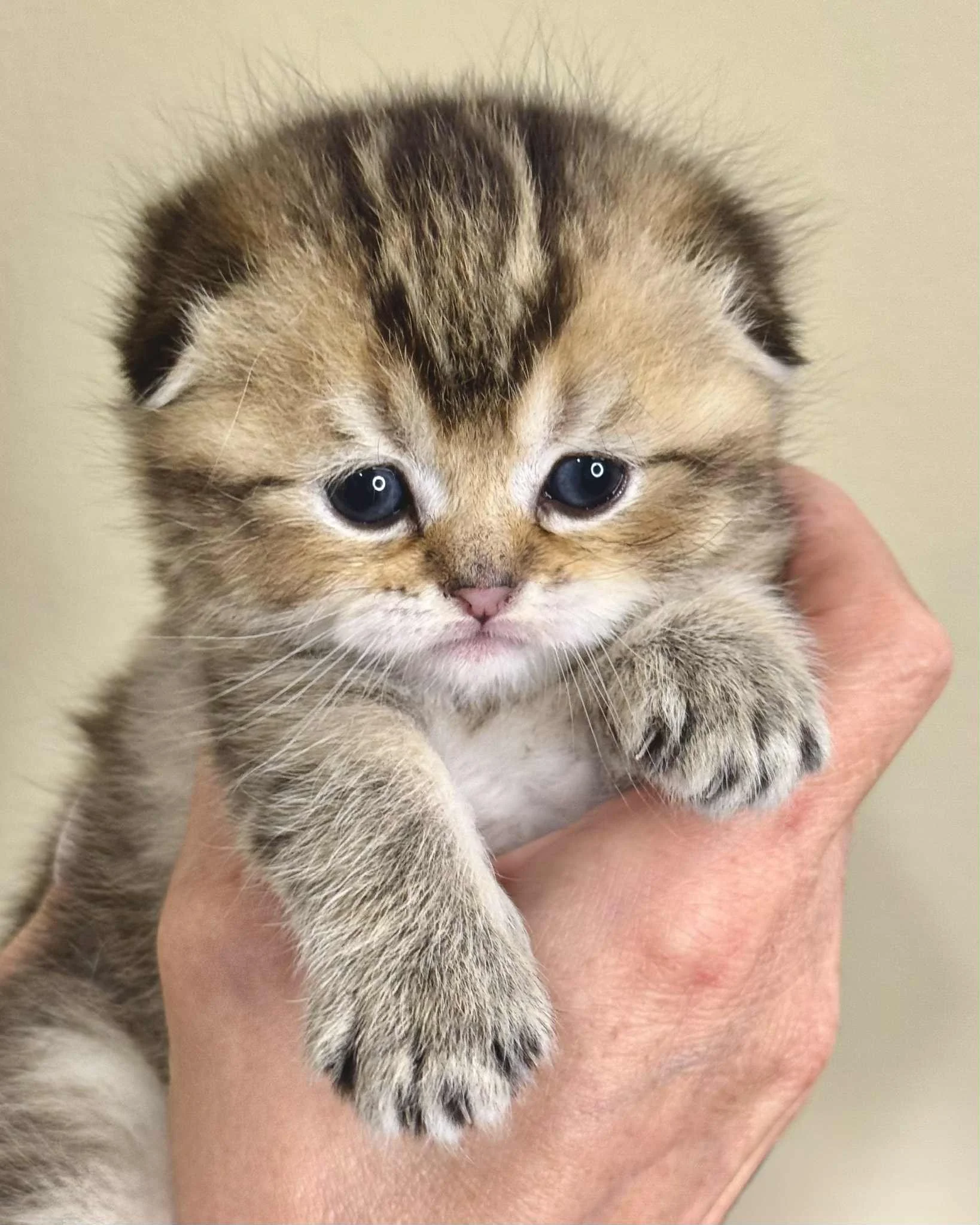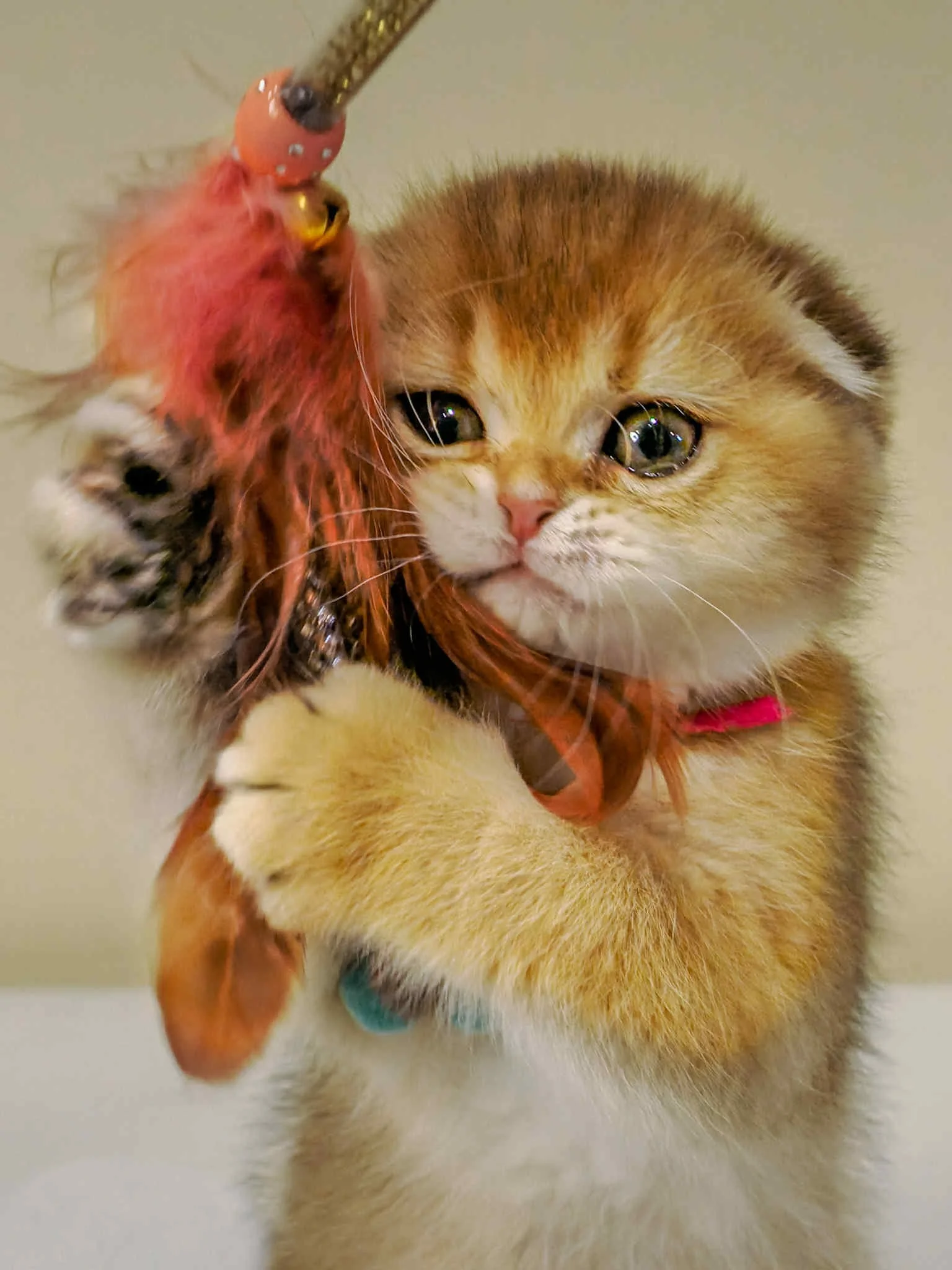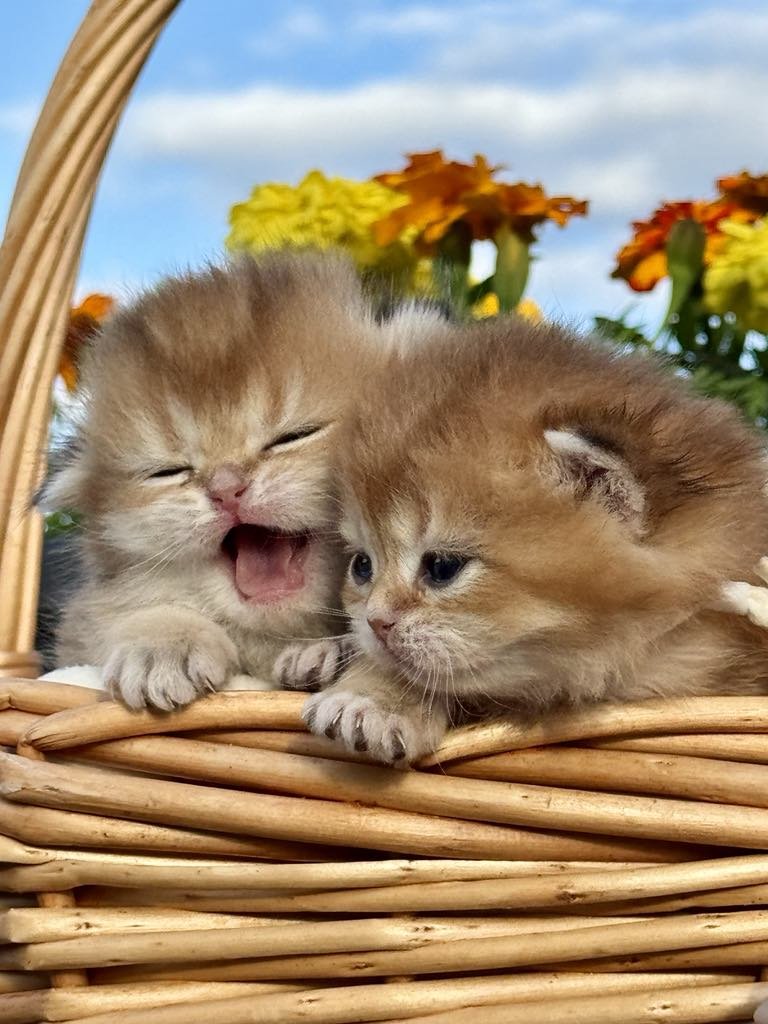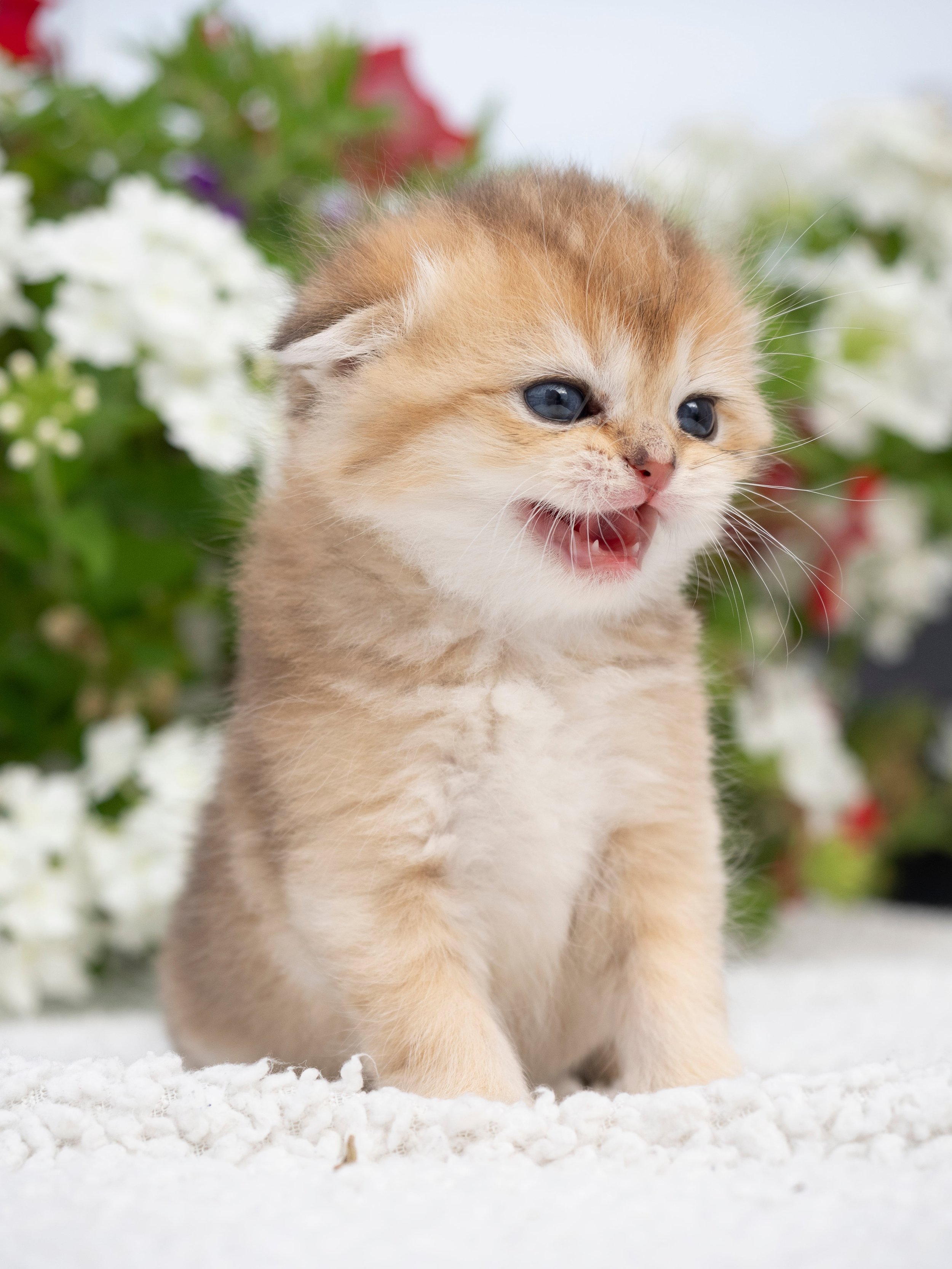Essential Supplies You Need Before Bringing Home Your Scottish Fold Kitten
At PurrfectlyFold, every product we recommend is something we’ve personally tested in our cattery. Scottish Folds have specific needs, so choosing high-quality supplies—like stainless steel fountains for hydration and tofu litter for low dust and odor—helps create a clean, stress-free environment. These trusted items support healthy development and make your kitten’s transition into their new home smooth and comfortable.
The Origins and Evolution of the Scottish Fold: From Susie to a Worldwide Icon
Discover the Scottish Fold cat breed—its history, unique folded ears, health considerations, temperament, and how to care for these charming cats
Understanding Folded Ears in Scottish Fold cats and what is Osteochondrodysplasia (OSD)
Scottish Fold cats are famous for their cute folded ears, caused by a genetic mutation affecting cartilage. This unique trait also carries health risks, including osteochondrodysplasia (OCD). The breed began with Susie, a white barn cat discovered in Scotland in the 1960s. Her distinctive folded ears captured attention, and her legacy continues in every Scottish Fold today, making the breed beloved worldwide.
Cat Health 101 — How to Know When Your Scottish Fold Cat Isn’t Feeling Well
Learn how to recognize early signs of illness in your Scottish fold cat. From eye changes to unusual hiding behavior — here’s what to check before calling the vet.
Scottish Fold Kitten Safety Guide
Scottish Folds are intelligent, playful, and endlessly curious. They love to climb, jump, and explore every corner — which makes home safety preparation essential before your new kitten arrives.
Here’s an expert guide to help you kitten-proof your home and keep your Scottish Fold safe.
Helping Your Scottish Fold Kitten Adjust to a New Home
Bringing a Scottish Fold kitten home is exciting, but adaptation is critical for their health. Expert breeder tips: provide a safe space, avoid sudden food changes, reduce stress, and follow a consistent routine. A calm transition supports immunity, prevents stress-related illnesses, and helps your kitten grow into a confident, happy companion.
Fleas on Cats – Identification, Removal, and Prevention
Fleas are common external parasites in cats that feed on blood, causing itching, irritation, and sometimes anemia. They can spread tapeworms and harmful bacteria, even posing risks to humans. Early detection and removal are essential for your cat’s health.
Managing and Preventing Common Parasites in Scottish Fold Cats
Learn about common internal and external parasites in cats, including fleas, ticks, roundworms, hookworms, tapeworms, and Giardia, with prevention tips.
Scottish Fold Cats - Colors and Patterns with pictures
Scottish Folds are gentle, loving cats that thrive with care and patience. They come in a variety of colors and patterns, each with their own charm. At PurrfectlyFold in Pennsylvania, we raise well-socialized Scottish Fold and Straight kittens in stunning golden shades—confident, affectionate, and ready to brighten your home.
How to Recognize if Your Scottish Fold Cat is in Pain
Cats have a strong survival instinct to mask pain, making it difficult for owners to recognize when something is wrong. They may tolerate discomfort for long periods, and by the time obvious signs appear, the condition can be advanced. Unlike dogs, cats rarely vocalize; instead, pain is revealed through subtle changes—such as altered posture, hiding, reduced appetite, or lower activity levels.
The Importance of DNA Testing in Scottish Fold Breeding
At PurrfectlyFold, we believe responsible breeding starts with science. That’s why all our Scottish Fold breeding cats are DNA tested using the Optimal Selection Wisdom Panel, which screens for over 45 genetic health conditions, identifies 25+ physical traits, determines blood type, and provides genetic consultations for any ‘at risk’ findings. This proactive approach ensures we only pair cats that are healthy, compatible, and genetically diverse—giving our kittens the best start in life and our future families peace of mind.
Scottish Fold Cats: Why You Should Never Declaw Your Cat
Declawing may sound like a simple nail trim, but it's actually a surgical amputation. In this procedure, the last bone of each toe is removed, which is equivalent to cutting off a human fingertip at the last knuckle.
Veterinarians call this surgery an onychectomy, and many no longer perform it due to the severe physical and behavioral effects it can cause.
How Much Do Scottish Fold Kittens Cost? The Real Difference Between Ethical and Backyard Breeders
Ever wonder why Scottish Fold kittens from ethical breeders cost more? 🐾 It’s not just about looks or pedigree—it’s about everything that goes into raising a healthy, happy kitten. Ethical breeders invest in DNA testing, vaccinations, early spay/neuter, and round-the-clock care to prevent health issues like osteochondrodysplasia. They also spend hours every day socializing kittens so they grow into confident, loving companions. The price reflects the quality of care—not just today, but for your kitten’s entire life. 💛
Why Kittens Should Stay with Their Breeder, Mom, and Siblings Until 3 Months Old
Responsible breeders, like PurrfectlyFold, keep kittens with their mother and littermates until 12–16 weeks to ensure they grow healthy, confident, and well-socialized. This time helps them develop strong immune systems, learn proper behavior, and adjust smoothly to their new homes.
In this post, we explain why the wait is worth it for Scottish Fold and Scottish Straight kittens—and for their future families.
The Real Cost of Raising a Kitten When Mom Can’t Nurse: Our Experience with a Type B Queen
At PurrfectlyFold Scottish Fold Cattery, we pour our hearts into raising healthy, well-socialized kittens. But behind the fluffy photos and sweet updates, there are moments of real challenge—especially when a mother cat (queen) isn’t able to nurse her kittens.
This is the story of what happens when a queen with blood type B gives birth and doesn’t produce enough milk. It’s a reality breeders rarely talk about, but it’s part of the commitment we make to each kitten’s life.
Why Spaying Your Female Cat Early Is Essential for Her Health
There’s a long-standing myth that a female cat should have “one litter first” before she’s spayed.
This is not only unnecessary — it can be dangerous.
The safest, healthiest choice for your female cat is to spay her before her first heat cycle.
Cat Nutrition Facts: Science-Backed Guide to a Healthy Feline Diet
Are you searching for reliable information on what’s best to feed your cat? Cat nutrition is one of the most debated topics among pet owners and veterinarians. Whether you’re curious about the benefits of commercial cat food, considering a natural or raw diet, or simply want to understand the science behind feline feeding, this comprehensive guide covers the essential facts about what cats need to thrive.
Love Cats but Have Allergies? How to Minimize Reactions and Find Your Perfect Match
Struggling with cat allergies? Discover 8 expert tips to reduce reactions and learn how Scottish Folds’ hypoallergenic traits may make them a perfect companion. From grooming to home management, this guide helps you enjoy cats allergen-free.
Key Questions to Ask a Breeder
Before choosing a kitten, know the essential questions to ask a breeder. If a breeder avoids questions, refuses to provide documentation, or does not show concern for where their kittens are going, consider it a red flag. Take your time, do your research, and choose a breeder who truly cares about their cats!
How to Find a Reputable Breeder and Avoid Scammers?
A responsible breeder prioritizes the health, well-being, and future of their kittens. If a breeder avoids questions, refuses to provide documentation, or does not show concern for where their kittens are going, consider it a red flag. Take your time, do your research, and choose a breeder who truly cares about their cats!

